Housing Choice Voucher Program
Lead Based Paint Hazards
Lead Paint in Section 8 Housing
Housing built before 1978 is likely to contain lead-based paint, which can be a hazard to young children. The Section 8 program has lead paint regulations that apply to some housing.
The regulations focus on keeping paint in good repair and safely maintained. Lead-based paint that is kept intact is not a hazard. However, deteriorating paint and areas where chips are allowed to accumulate do create a hazard. The regulations focus on the presence of lead dust that is released into the air and onto surfaces & soil. Dust is created when LBP on surfaces deteriorates or is exposed by friction contact like sliding window surfaces or released by sanding, dry scraping, or heat guns.
What Section 8 housing is covered by the regulations?
- Pre-1978 units occupied by a family with a child under six or pregnant mother
- Other units are exempted What areas inspected on covered housing?
- Unit interiors & exteriors, outbuildings, and common areas (hall ways, stairwells in multi-unit complexes)
What kind of inspection is done?
MMHA’s HQS inspector checks the paint surfaces visually for signs of cracking, scaling, chipping, peeling, chalking, or deteriorated substrate. He also checks for signs of loose chips on floor surfaces, window troughs, and exterior soil.
What happens if the paint passes this visual inspection?
- The unit is cleared for this inspection. No further action is needed.
- What happens if the paint does not pass the visual?
- Owner must repair failed paint using safe work practices.
- Then, unit must be “clearance tested” by certified tester.
What does a clearance test consist of?
- Tester checks the repaired paint area for signs of unclean chips and dust; if present, clearance fails.
- On interior clearances, tester collects a number of dust wipe samples from site, and submits to a testing lab. For evidence of lead dust; if present, clearance fails.
- On exterior clearances, only visual test is done.
What are “safe work practices”?
Refers to repair methods used to reduce the amount and spread of dust. This dust affects tenants and repair workers.
- Isolate interior work areas with plastic sheeting on room doors. Cover floors and furnishings with plastic. On exteriors, cover foundations to collect scraped chips and dust.
- Use a respirator or mask approved for lead paintwork.
- Wet Sanding/Scraping. Wet the affected areas while scraping/sanding, except electrical areas. Use wet-sanding equipment, wet/dry abrasive paper, wet sanding sponges.
- Scrape with an infrared or coil-type heat gun with temps. Below 1,100 degrees F.
- Vacuum work areas with a HEPA-type filter-equipped vacuum to remove dust. MMHA has a HEPA vacuum. To lend owners to help with clean up. Call to schedule use of the vacuum.
- Complete job by cleaning area with powdered high phosphate detergent to remove remaining dust. Workers wash work clothes separately, shower and wash hair to reduce dust contamination.
- In addition follow the lead safe work practices document attached to your fail report or at the following link MMHA lead policies.
- Protect you and your family from lead pamphlet.
What can Owners do to manage the lead-based paint regulations?
Inventory housing stock to identify units built before 1978. If not in your documents, check with the county auditor at the Courthouse or on their website at:
Assess the pre-1978 units and develop a maintenance / renovation schedule. Some of the work that is done to eliminate LBP hazards, such as exterior siding and replacing windows can also increase the value of the property. Prior to MMHA’s HQS inspection, do a walk through to make sure that your maintenance schedule hasn’t overlooked something.
Follow the link to the websites for more information on lead.
Some lead facts:
- Most pre-1978 housing contains some LBP
- LBP is more common, and in higher concentration, in pre-1950 housing
- LBP cannot be visually identified
- Common sites of LBP are wear areas, such as windows, interior & exterior trim, stairs, porch decks
- Window troughs are likely to be the place that will contain the highest concentration of LBP chips and dust
- Varnishes and stains can contain lead


